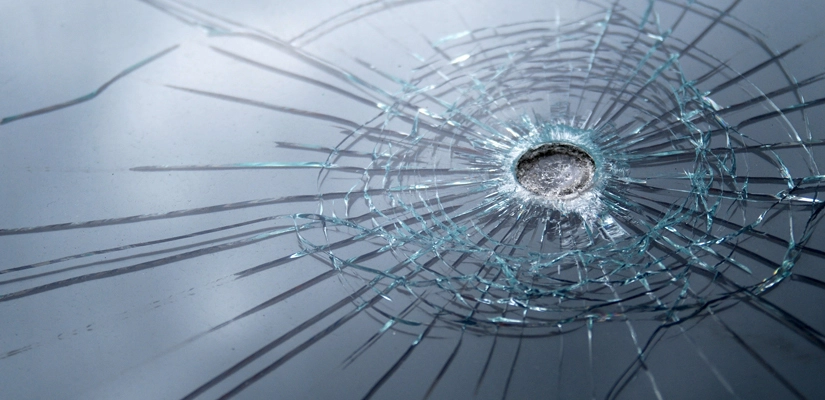
Glass Doctor expalins the meticulous process required to craft bulletproof glass.
|
Bulletproof glass seems like the best safety measure you can take to protect your house or business property – and maybe it is – but like any material, bulletproof glass isn’t completely impenetrable. It’s more accurate to say this glass is “bullet resistant.” In fact, can we even call it glass?
When Was Bulletproof Glass Invented and What Is Bulletproof Glass Made Of?
- History: According to Inkasarmored.com, the concept of bullet-resistant glass was stumbled upon quite by accident in the 17th century, but it wasn’t until 1903 that the quest of researching and developing “bulletproof” glass began. Modern “bulletproof” glass was first patented by French chemist, Édouard Bénédictus in 1909.
- Layering: Bullet-resistant glass is made of layers of different polycarbonate plastics (such as Makroclear™, Cryolon or Tuffak) in-between layers of glass to help absorb the impact of a bullet. As you might guess, the thickness of these sheets, which can also be made from acrylic, determines how resistant the glass might be to projectiles.
- Bonding: The laminated glass layers are bonded together with chemicals such as polyurethane or PVB (polyvinyl butyral), and the chemical process, which often occurs in a vacuum to eliminate air pockets that could weaken the bonds, strengthens the glass and makes the layers easy to see through. Then, the unit is pressurized and heated to solidify the bonds. This is one tough piece of glass.
How Bullet-Resistant Glass Works
Ordinary glass shatters in radiating fractures from the point of entry of a bullet, and the glass does nothing to slow the momentum of the projectile. In fact, the glass shards resulting from a bullet entry can be as deadly as the bullet itself.
When a bullet strikes bullet-resistant glass, however, it flattens out as its energy is spread sideways through the layers. The energy is quickly absorbed and the projectile is slowed enough not to penetrate the pane or do much damage if it does. Although the glass will break inside the layers, the bonded plastic keeps it from shattering forward, protecting those behind it against both flying glass shards. A bullet fired from a weapon not larger and more powerful than the glass is rated to protect, will bounce off the glass.
The Pros and Cons of Bulletproof Glass
The benefits of bullet-resistant glass, or ballistic glass as it is also called, seem obvious. This lifesaving material protects people in vehicles, such as the “Popemoblie,” officers in police cars and those riding in presidential transports. Bulletproof glass also safeguards buildings such as jewelry stores and banks – even the White House – among many other uses.
Issues concerning bullet-resistant glass include its weight. Ballistic glass is thick and heavy. The thicker the glass is, the safer it is, but this can cause the sheets to be too heavy for some applications. While this might not be such a concern for constructing buildings, for example, it is especially problematic for use in vehicles or retail settings. This is because another issue is that the thickness can increase opacity (light blocking), making the glass difficult to see through. Determinations must be made on cost, weight and effectiveness for varying uses of bullet-resistant glass.
Contact Glass Doctor to Learn More About Bulletproof Glass
The glass experts at Glass Doctor® can advise you of the many ways you can use glass in and around your home or business property. Connect with the Glass Doctor nearest you or schedule an appointment online to learn more about options for protecting your home.

